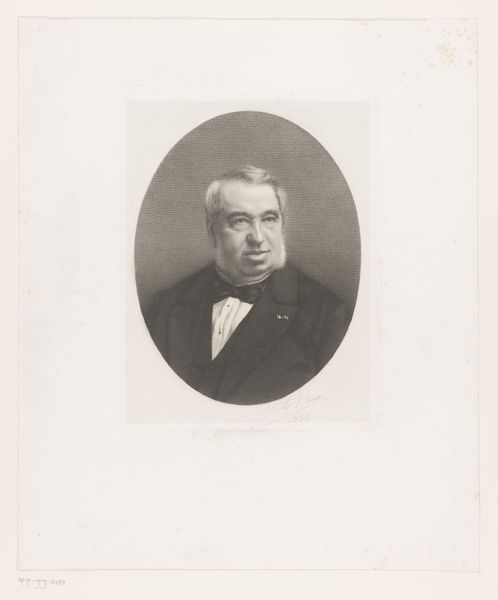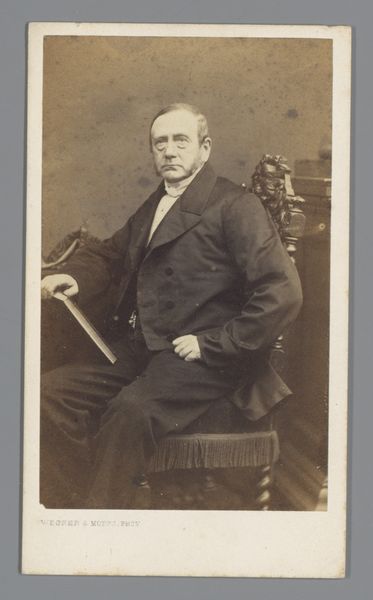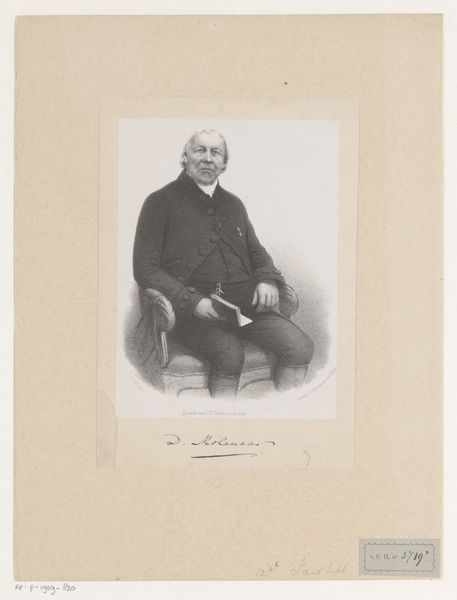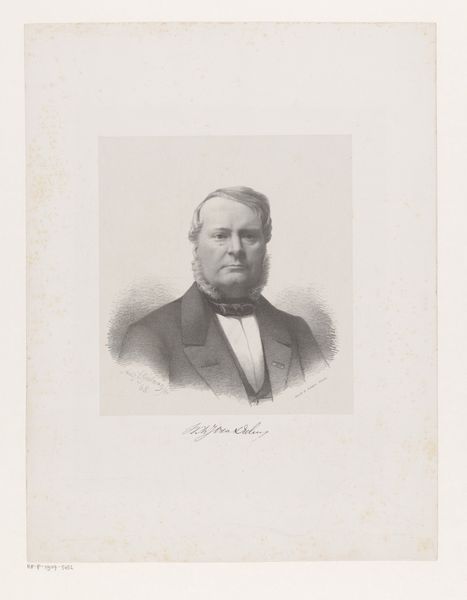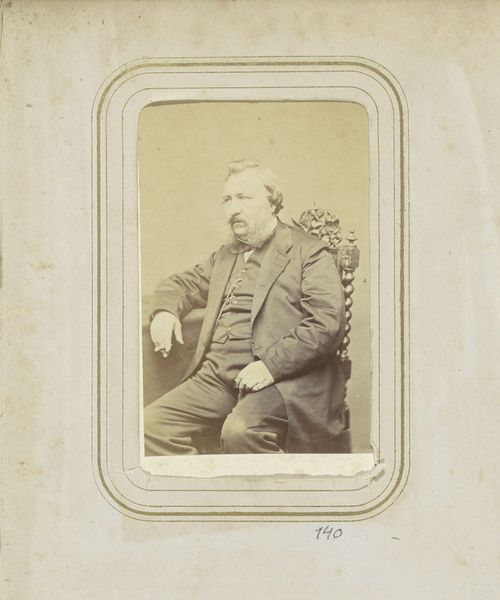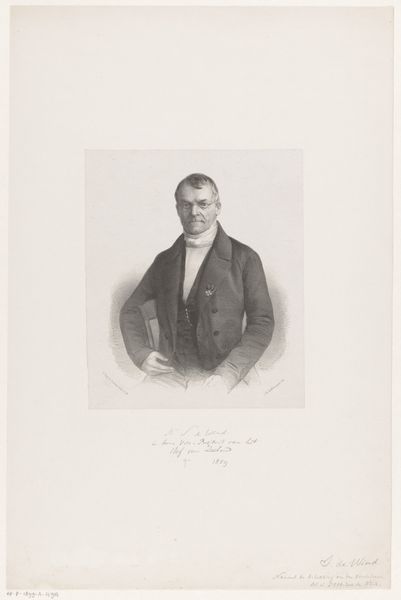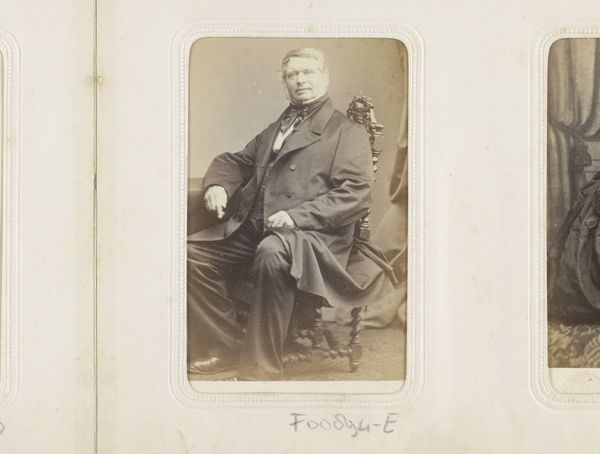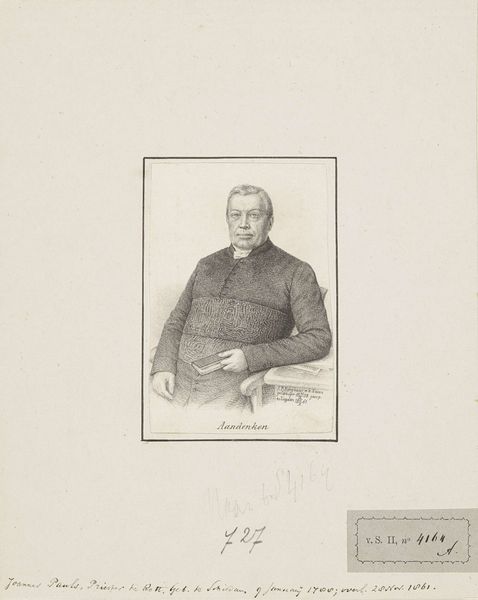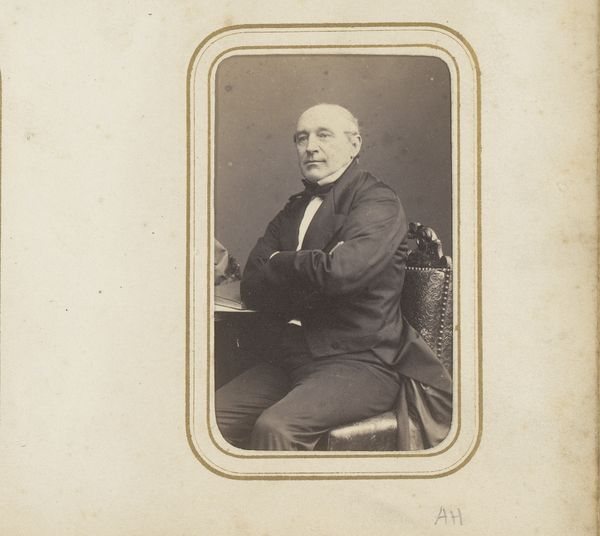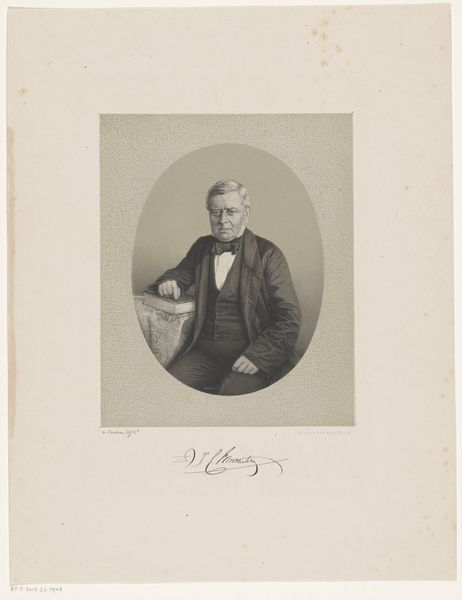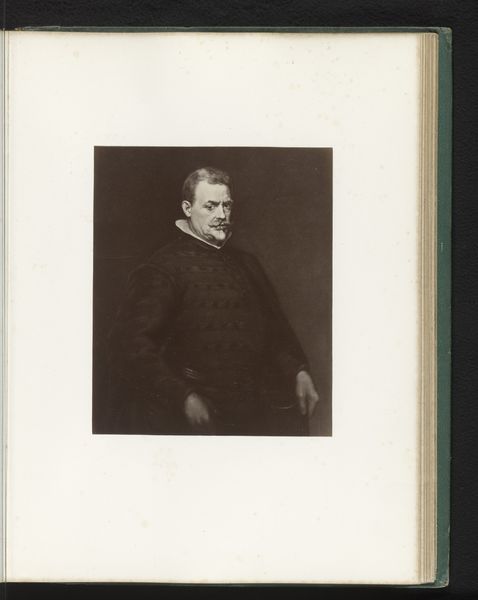
Fotoreproductie van een geschilderd portret van predikant Sybren Klases Sybrandi 1862 - 1882
0:00
0:00
photography, gelatin-silver-print
#
portrait
#
archive photography
#
photography
#
historical photography
#
gelatin-silver-print
#
realism
Dimensions: height 91 mm, width 53 mm
Copyright: Rijks Museum: Open Domain
Curator: This photographic print, a gelatin-silver print dating from 1862 to 1882, presents a portrait of Reverend Sybren Klases Sybrandi, reproduced from what appears to be a painted portrait. It’s attributed to Ch. Binger & Co. Editor: Immediately, I notice the severe rectilinearity; the stark right angles present an immediate feeling of constraint. The subject's rigid posture and stern expression only amplify this effect. Curator: Indeed, the composition is quite formal. Notice the strong central axis reinforced by the figure's direct gaze and centered position in the frame. This compositional rigidity likely reflects the sitter's professional and social standing in society. Editor: I find it intriguing that this is a reproduction of a painted portrait. The layers of representation add complexity. There’s a visual flattening – the textures become somewhat homogenized in translation from paint to photography. Is it meant to be seen as objective? Or is there more intention being projected into the final presentation? Curator: Well, photography at this time was in its relative infancy, and a reproduction like this makes painted portraiture more accessible. The photograph circulates more widely, potentially reinforcing the power and authority associated with religious figures within a growing public sphere. Editor: And the subject's clothing becomes incredibly relevant – that conservative color, the cut of the suit – the message is clear: this is a portrait that intends to communicate power and the position it reflects. It has an almost governmental quality to its effect, this pronouncement of importance. Curator: Precisely. And despite the limitations inherent in the photographic process of that era, the details are quite telling – the hint of texture in his suit, the pages of the books on the desk suggesting knowledge and learning. Editor: Looking closer at the play of light and shadow across his face and attire, one appreciates how that era's portrait work relied on chiaroscuro effects; despite the limited palette, volume and texture emerge, granting the subject weight and power. Curator: An exercise in preservation of public figures, and the democratization of it for his audience. This seemingly simple photograph holds many layers when considered with respect to society and religious structure. Editor: Yes, what seems like a simple visual exercise really expands in what we have gleaned about society, representation, and, most of all, presence and absence through layering.
Comments
No comments
Be the first to comment and join the conversation on the ultimate creative platform.
